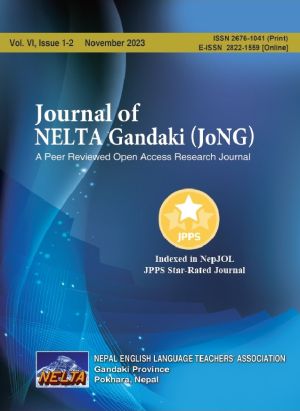Exploring Students' Experiences of Using Facebook for Communication and Education
DOI:
https://doi.org/10.3126/jong.v6i1-2.59709Keywords:
Facebook usage, Online collaboration, descriptive-qualitative, learning purposes, e-communicationAbstract
This article aims to explore the Secondary Level students' experiences and perceptions of using Facebook for academic and communicational purposes contributing to the less explored literature on students’ social media usage in the context of Nepal. I used a descriptive-qualitative approach based on semi-structured interviews with purposively selected eight grades 11 and 12 students studying in a government secondary school in Morang to investigate their daily usage of Facebook. The thematic analysis of this study indicated that most students perceived Facebook positively as one of the potential tools for their classroom learning purposes along with their daily online communication with family, relatives, and friends. However, some students also revealed their experiences of misusing Facebook such as creating fake Facebook accounts, chatting and flirting with unknown people, uploading fake photos, and receiving unpleasant comments in the posts resulting in family pressure on them. This study highlighted Facebook as a popular social network that has become one of the important tools in students’ daily lives and academic careers by ensuring their electronic participation in communication and education, increasing their social relationships, collaboration and information sharing in the 21st century.
Downloads
Downloads
Published
How to Cite
Issue
Section
License
Copyright (c) 2023 Nepal English Language Teachers' Association Gandaki Province

This work is licensed under a Creative Commons Attribution-NonCommercial 4.0 International License.
This license allows reusers to distribute, remix, adapt, and build upon the material in any medium or format for noncommercial purposes only, and only so long as attribution is given to the creator.




